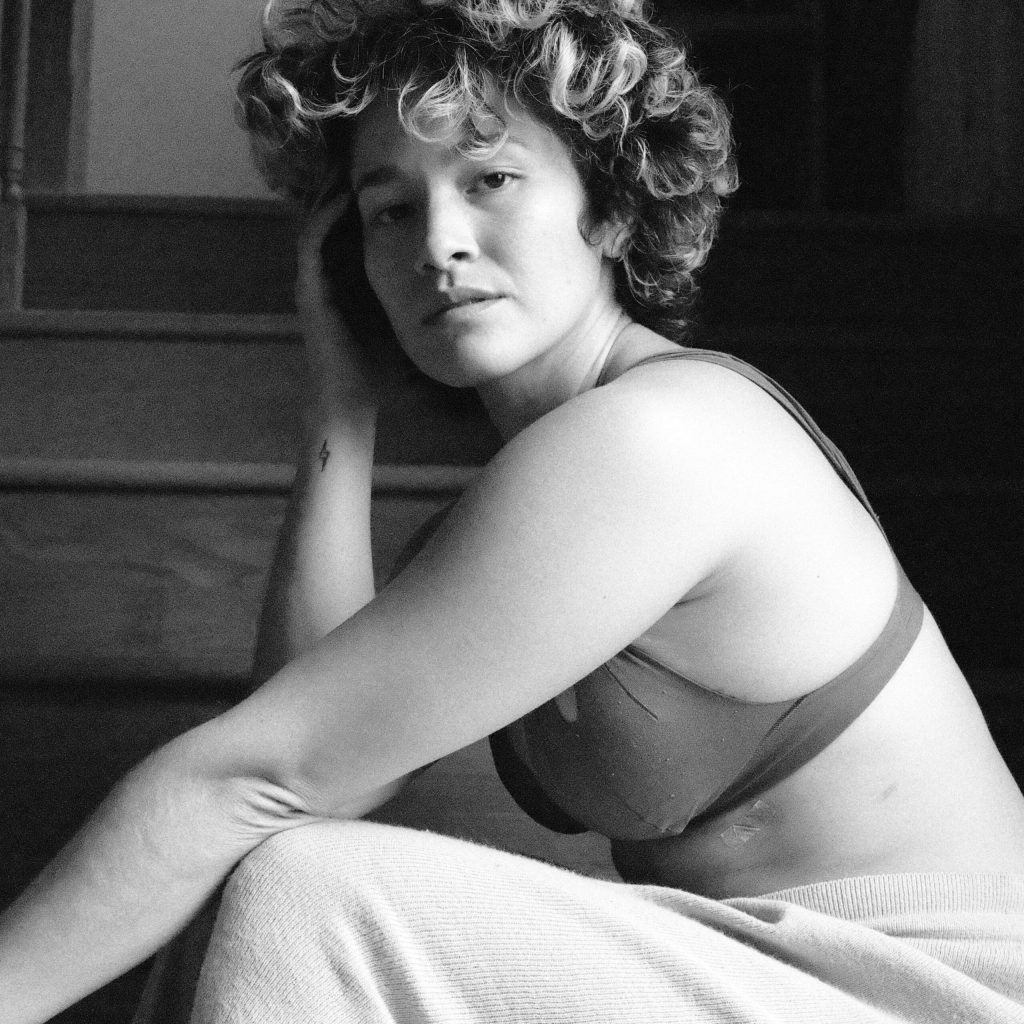When Bianca Muñiz noticed an unusual lump in her breast, she had a feeling it was cancer. At 22 years old, she had already survived cancer once, having been diagnosed with ovarian cancer when she was just 11 years old. Since then, she had become very in tune with her body and consistently performed self-breast exams, checking for lumps.
Muñiz’s intuition was right: she was diagnosed with breast cancer in 2016 – a year after she first raised her concerns with her doctor.
“I felt relief [when I received my diagnosis],” Muñiz tells POPSUGAR. “I knew something was wrong, and the [first doctor I saw] . . . kind of just dismissed it.”
Research shows that health disparities often prevent Latina women from getting proper access to healthcare – resulting in breast cancer being underdiagnosed until its later stages. Muñiz easily could have become one of such women: a lack of access to health insurance initially acted as a barrier to her diagnosis.
Related: After 5 Failed Breast Reconstructions, Getting a Tattoo Over My Scars Helped Me Heal
“When I graduated from college, I lost my insurance because I was getting insurance from school,” Muñiz says. Her quest for a diagnosis therefore stalled until she was able to find a new insurance provider and, as a result, an entirely new medical team.
Now, Muñiz is passionate about sharing her story – through music, blogging, and an upcoming photography project – in the hopes that she’ll be able to bring attention to the disparities that Latinas face while simultaneously inspiring other patients to advocate for the care they deserve.
The Barriers to Care Don’t End With a Diagnosis
Following her breast cancer diagnosis, Muñiz began a treatment plan that included a physically and mentally taxing chemotherapy regimen, a mastectomy, and postmastectomy reconstruction surgery. And each step of the way, Muñiz says, she was forced to overcome challenges presented by an inscrutable, inequitable system.
“[Nearly] every part of my cancer journey – such as whatever tests and scans I need – is always a battle with insurance,” says Muñiz. At times, Muñiz even took to social media to push her insurance provider to cover necessary treatments.
For Muñiz, education was key to becoming a better advocate for herself (and now others). For instance, she learned that federal law requires insurance companies to cover the cost of reconstructive surgery after a mastectomy. Despite this being the case, a recent survey from the American Society of Plastic Surgeons found that 73 percent of women were unsure if they’d be responsible for paying for the surgery. This lack of information likely impacts “whether patients choose to even explore their treatment options,” Bernard Lee, MD, MPH, the president of The Plastic Surgery Foundation, told the American Society of Plastic Surgeons.
Muñiz also studied up on the options available to her following her mastectomy. Survivors can choose between implant-based reconstruction and autologous (flap) reconstruction, each tailored to individual preferences and medical circumstances. One may also opt for a flat closure or choose not to reconstruct at all.
While Muñiz determined implants were the right route for her, she emphasizes how deeply individual – and personal – this decision is. “It’s your body and it’s your choice and you should be happy with the outcome,” Muñiz says.
For Muñiz, choosing to have breast cancer reconstruction surgery was about more than just a physical restoration. She says it was a vital step in regaining control over her body and self-image, transcending the scars left behind by cancer.
“I knew that I wanted to be put back together as close to my original body as possible because so much was done to me,” Muñiz says. “I wanted to be able to look in the mirror and see myself as I am,” she says.
Embracing Self-Love
If there’s one thing Muñiz says she has taken away from this entire experience, it’s the importance of staying connected to her body and herself. She says that before her breast cancer diagnosis, she was really hard on herself.
“I was actually really unkind to myself and my body. I internalized what other people had said to me and then also what the media portrayed as the standard of beauty,” she says.
These feelings kicked into hyperdrive for Muñiz when her body changed in unexpected ways during chemo. “I got acne when I started chemo. That’s what threw me off – the acne – because I expected the hair loss. I knew I would probably gain weight. I would lose my eyebrows. But then I got acne all over my face. And I was like, ‘Are you kidding me? I didn’t plan for this,'” Muñiz says.
To embrace her healing body, Muñiz staged a series of photo shoots. “I put on lingerie when I had the expanders in and also when I got my implants put in . . . just in my room by myself, taking photos of myself,” Muñiz says. “That helped me reconnect to my changing new body. That is something that I’ve recommended to a lot of people.”
In becoming a breast cancer “thriver,” as she calls it, Muñiz learned to show herself a new level of grace and kindness. “When all of this happened, it forced me to learn how to love myself properly,” she says. “It wasn’t until this that I was actually forced to do so because I had no other option.”
Originally from Sleepy Hollow, NY, Bianca Muñiz is a singer-songwriter, photographer, and social media manager who now works to raise awareness of breast cancer. She is featured along with 11 other women in the “Reblossom” coffee table book, which draws on flowers that blossom to detail the resilience of women who’ve been affected by breast cancer. The book was launched with an exhibit on Breast Reconstruction Awareness Day.

